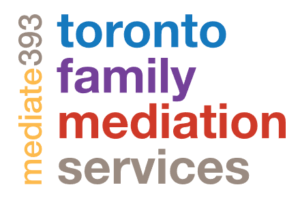Mediating With Your Mental Health In Mind – Part 5
10.30.2020
By Raheena Dahya, TFMS Roster Mediator
This series is designed to provide you with some tips and activities you can do to help manage your mental health while going through the family law process.
Practice Shame Resilience
Brene Brown’s developed a framework to create shame resilience. You can watch her Ted Talk, Listening to Shame, here.
She defines shame as: “the fear of disconnection” and as “the intensely painful feeling or experience of believing that we are flawed and therefore unworthy of love and belonging.” A critical component of shame is that it is a “social wound”. The connection that shame threatens is to other people and threatens one’s sense of belonging. Through her research, 12 categories of shame emerged
12 Categories of Shame
- Appearance and body image
- Money and Work
- Motherhood / fatherhood
- Family
- Mental and physical health
- Addiction
- Sex
- Aging
- Religion
- Surviving trauma
- Being stereotyped or labeled
Many or all of these can get engaged during a time of family transition. So cultivating shame resilience can be incredibly valuable when you’re contending with family law issues.
Brown notes that it is important to be able to differentiate between shame and other emotions such as guilt, humiliation, and embarrassment.
Here are the differences:
Shame vs Guilt
“ Guilt = I did something bad.
Shame = I am bad.”
Shame vs Humiliation
Depending on whether the person feeling the emotion thinks they deserve to be treated in away that fosters disconnection. The example she gives involves someone being called a “loser” by their boss in front of their colleagues. If the person doesn’t believe they deserve to be treated this way, they will experience humiliation. If they believe they are a loser, they will experience shame.
Shame vs Embarrassment
“Embarrassment is the least serious of the four emotions. It’s normally fleeting and it can eventually be funny. The hallmark of embarrassment is that when we do something embarrassing, we don’t feel alone. We know other folks have done the same thing and, like a blush, it will pass rather than define us” Walking out of the washroom with toilet paper on one’s shoe might cause a sense of embarrassment.
Shame Resilience
Dr. Brown explains that we can cultivate a competency called shame resilience. This is:
“… [T]he ability to practice authenticity when we experience shame, to move through the experience without sacrificing our values, and to come out on the other side of the shame experience with more courage, compassion, and connection than we had going into it. Shame resilience is about moving from shame to empathy – the real antidote to shame.
[…] A social wound needs a social balm, and empathy is that balm. Self-compassion is key because when we’re able to be gentle with ourselves in the midst of shame, we’re more likely to reach out , connect, and experience empathy.
To get empathy, we have to first know what we’re dealing with. Here are the four elements of shame resilience – the steps don’t always happen in this order, but they always ultimately lead us to empathy and healing:
Recognize Shame And Understand Its Triggers
Shame is a biology and biography. Can you physically recognize when you’re in the grips of shame, feel your way through it, and figure out what messages and expectations triggered it?
Practicing Critical Awareness
Can you reality- check the messages and expectations that are driving your shame? Are they realistic? Attainable? Are they what you want to be or what you think others need/want from you?
Reaching Out
Are you owning or sharing your story? We can’t experience empathy if we’re not connecting.
Speaking Shame
Are you talking about how you feel and asking for what you need when you feel shame? “
When it comes to sharing your emotions, turn to a trusted friend or, if you feel uncomfortable speaking with someone in your circle, you can always call a distress line and practice the sharing parts of the shame resilience practice with the counsellor.

